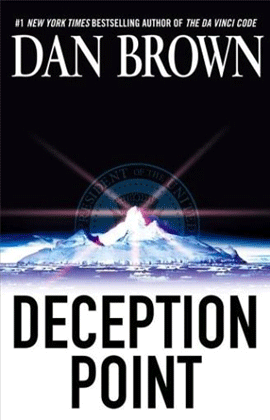
Spinors and Space-Time: Volume 2
$489.00 $440.10
Spinor and Twistor Methods in Space-Time Geometry introduces the theory of twistors, and studies in detail how the theory of twistors and 2-spinors can be applied to the study of space-time. Twistors have, in recent years, attracted increasing attention as a mathematical tool and as a means of gaining new insights into the structure of physical laws. This volume also includes a comprehensive treatment of the conformal approach to space-time infinity with results on general-relativistic mass and angular momentum, a detailed spinorial classification of the full space-time curvature tensor, and an account of the geometry of null geodesics.
Size

Spinors and Space-Time: Volume 1
$489.00 $440.10
This volume introduces and systematically develops the calculus of 2-spinors. This is the first detailed exposition of this technique which leads not only to a deeper understanding of the structure of space-time, but also provides shortcuts to some very tedious calculations. Many results are given here for the first time.
Size

The Large, the Small and the Human Mind
$320.00 $288.00
Roger Penrose's original and provocative ideas about the large-scale physics of the Universe, the small-scale world of quantum physics and the physics of the mind have been the subject of controversy and discussion. These ideas were proposed in his best-selling books The Emperor's New Mind and Shadows of the Mind. In this book, he summarises and updates his current thinking in these complex areas to present a masterful summary of those areas of physics in which he feels there are major unresolved problems. Through this, he introduces radically new concepts which he believes will be fruitful in understanding the workings of the brain and the nature of the human mind. These ideas are challenged by three distinguished experts from different backgrounds: Abner Shimony and Nancy Cartwright as philosophers of science and Stephen Hawking as a theoretical physicist and cosmologist. Roger Penrose concludes with a response to their thought-provoking criticisms.
Size

The Nature of Space and Time
$280.00 $252.00
Einstein said that the most incomprehensible thing about the universe is that it is comprehensible. But was he right? Can the quantum theory of fields and Einstein's general theory of relativity, the two most accurate and successful theories in all of physics, be united into a single quantum theory of gravity? Can quantum and cosmos ever be combined? In The Nature of Space and Time, two of the world’s most famous physicists―Stephen Hawking (A Brief History of Time) and Roger Penrose (The Road to Reality)―debate these questions.
The authors outline how their positions have further diverged on a number of key issues, including the spatial geometry of the universe, inflationary versus cyclic theories of the cosmos, and the black-hole information-loss paradox. Though much progress has been made, Hawking and Penrose stress that physicists still have further to go in their quest for a quantum theory of gravity.
Size

Fashion, Faith, and Fantasy in the New Physics of the Universe
$470.00 $423.00
What can fashionable ideas, blind faith, or pure fantasy possibly have to do with the scientific quest to understand the universe? Surely, theoretical physicists are immune to mere trends, dogmatic beliefs, or flights of fancy? In fact, acclaimed physicist and bestselling author Roger Penrose argues that researchers working at the extreme frontiers of physics are just as susceptible to these forces as anyone else. In this provocative book, he argues that fashion, faith, and fantasy, while sometimes productive and even essential in physics, may be leading today's researchers astray in three of the field's most important areas—string theory, quantum mechanics, and cosmology.
Arguing that string theory has veered away from physical reality by positing six extra hidden dimensions, Penrose cautions that the fashionable nature of a theory can cloud our judgment of its plausibility. In the case of quantum mechanics, its stunning success in explaining the atomic universe has led to an uncritical faith that it must also apply to reasonably massive objects, and Penrose responds by suggesting possible changes in quantum theory. Turning to cosmology, he argues that most of the current fantastical ideas about the origins of the universe cannot be true, but that an even wilder reality may lie behind them. Finally, Penrose describes how fashion, faith, and fantasy have ironically also shaped his own work, from twistor theory, a possible alternative to string theory that is beginning to acquire a fashionable status, to "conformal cyclic cosmology," an idea so fantastic that it could be called "conformal crazy cosmology."
The result is an important critique of some of the most significant developments in physics today from one of its most eminent figures.
Size

Shadows of the Mind: A Search for the Missing Science of Consciousness
$460.00 $414.00
A New York Times bestseller when it appeared in 1989, Roger Penrose's The Emperor's New Mind was universally hailed as a marvelous survey of modern physics as well as a brilliant reflection on the human mind, offering a new perspective on the scientific landscape and a visionary glimpse of the
possible future of science. Now, in Shadows of the Mind, Penrose offers another exhilarating look at modern science as he mounts an even more powerful attack on artificial intelligence. But perhaps more important, in this volume he points the way to a new science, one that may eventually explain the
physical basis of the human mind.
Penrose contends that some aspects of the human mind lie beyond computation. This is not a religious argument (that the mind is something other than physical) nor is it based on the brain's vast complexity (the weather is immensely complex, says Penrose, but it is still a computable thing, at least
in theory). Instead, he provides powerful arguments to support his conclusion that there is something in the conscious activity of the brain that transcends computation--and will find no explanation in terms of present-day science. To illuminate what he believes this "something" might be, and to
suggest where a new physics must proceed so that we may understand it, Penrose cuts a wide swathe through modern science, providing penetrating looks at everything from Turing computability and Godel's incompleteness, via Schrodinger's Cat and the Elitzur-Vaidman bomb-testing problem, to detailed
microbiology. Of particular interest is Penrose's extensive examination of quantum mechanics, which introduces some new ideas that differ markedly from those advanced in The Emperor's New Mind, especially concerning the mysterious interface where classical and quantum physics meet. But perhaps the
most interesting wrinkle in Shadows of the Mind is Penrose's excursion into microbiology, where he examines cytoskeletons and microtubules, minute substructures lying deep within the brain's neurons. (He argues that microtubules--not neurons--may indeed be the basic units of the brain, which, if
nothing else, would dramatically increase the brain's computational power.) Furthermore, he contends that in consciousness some kind of global quantum state must take place across large areas of the brain, and that it within microtubules that these collective quantum effects are most likely to
reside.
For physics to accommodate something that is as foreign to our current physical picture as is the phenomenon of consciousness, we must expect a profound change--one that alters the very underpinnings of our philosophical viewpoint as to the nature of reality. Shadows of the Mind provides an
illuminating look at where these profound changes may take place and what our future understanding of the world may be.
Size

Cycles of Time: An Extraordinary New View of the Universe
$380.00 $342.00
Penrose presents a new perspective on three of cosmology’s essential questions: What came before the Big Bang? What is the source of order in our universe? And what cosmic future awaits us?
He shows how the expected fate of our ever-accelerating and expanding universe—heat death or ultimate entropy—can actually be reinterpreted as the conditions that will begin a new “Big Bang.” He details the basic principles beneath our universe, explaining various standard and non-standard cosmological models, the fundamental role of the cosmic microwave background, the paramount significance of black holes, and other basic building blocks of contemporary physics. Intellectually thrilling and widely accessible, Cycles of Time is a welcome new contribution to our understanding of the universe from one of our greatest mathematicians and thinkers.
Size

The Emperor's New Mind: Concerning Computers, Minds, and the Laws of Physics
$690.00 $621.00
For decades, proponents of artificial intelligence have argued that computers will soon be doing everything that a human mind can do. Admittedly, computers now play chess at the grandmaster level, but do they understand the game as we do? Can a computer eventually do everything a human
mind can do?
In this absorbing and frequently contentious book, Roger Penrose--eminent physicist and winner, with Stephen Hawking, of the prestigious Wolf prize--puts forward his view that there are some facets of human thinking that can never be emulated by a machine. Penrose examines what physics and
mathematics can tell us about how the mind works, what they can't, and what we need to know to understand the physical processes of consciousness.
Size

The Road to Reality: A Complete Guide to the Laws of the Universe
$880.00 $792.00
The Road to Reality is the most important and ambitious work of science for a generation. It provides nothing less than a comprehensive account of the physical universe and the essentials of its underlying mathematical theory. It assumes no particular specialist knowledge on the part of the reader, so that, for example, the early chapters give us the vital mathematical background to the physical theories explored later in the book.
Roger Penrose's purpose is to describe as clearly as possible our present understanding of the universe and to convey a feeling for its deep beauty and philosophical implications, as well as its intricate logical interconnections.
The Road to Reality is rarely less than challenging, but the book is leavened by vivid descriptive passages, as well as hundreds of hand-drawn diagrams. In a single work of colossal scope one of the world's greatest scientists has given us a complete and unrivalled guide to the glories of the universe that we all inhabit.






/23.gif)



/38.gif)
/35.gif)
/43.gif)

/26.gif)
/6.gif)

/101.gif)

/81.gif)



/61.gif)
/87.gif)





/63.gif)



/14.gif)


/55.gif)


/107.gif)






/30.gif)






/118.gif)




/43.gif)



/74.gif)










/12.gif)


/117.gif)
/21.gif)


/11.gif)

/102.gif)


/152.gif)







/75.gif)









/21.gif)

/76.gif)






/39.gif)
/108.gif)
/26.gif)







